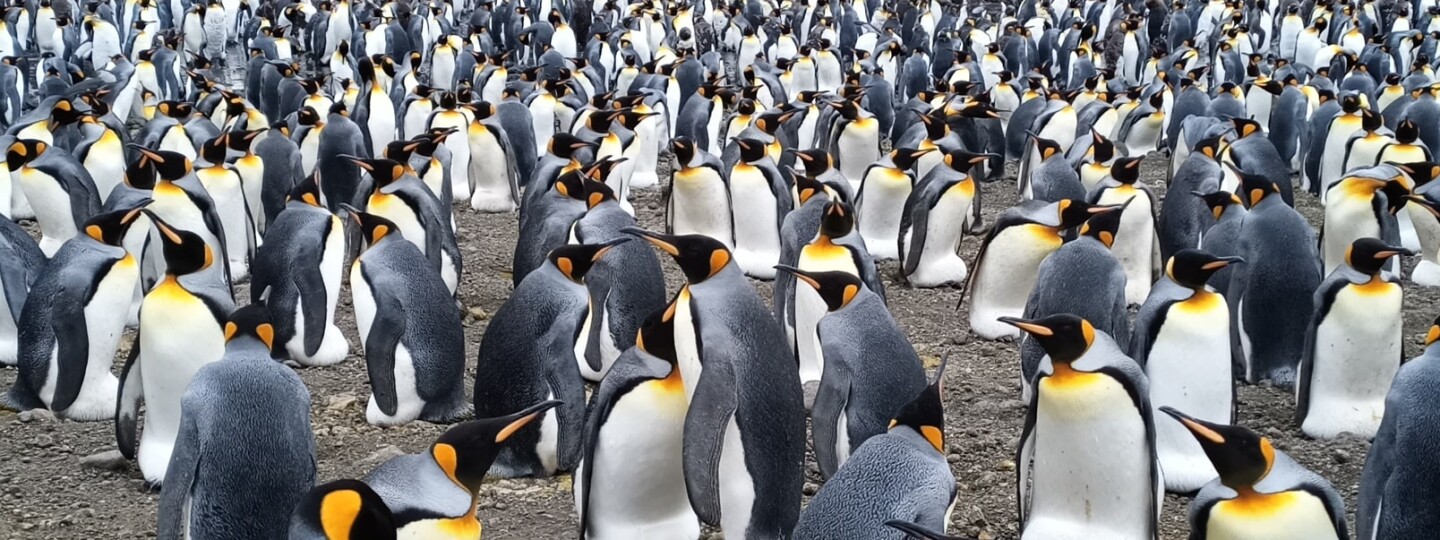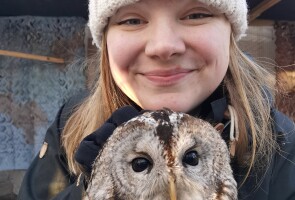Doctoral researcher Nina Cossin-Sevrin studied how stress and unfavourable living conditions affect the metabolic efficiency of birds, and what effects this has on, for example, their growth or reproduction.
Nothing happens in nature without energy. All animals rely on energy in order to grow, reproduce and thrive. Inside cells, mitochondria convert nutrients into energy. How efficiently they do this varies between individuals, and this variation can have far ranging effects, modulating growth, reproduction and survival.
In her dissertation research Nina Cossin-Sevrin investigated how metabolic efficiency could be used as an indicator of quality in wild birds. The research focused on particularly stressful episodes in their life: growth, and reproduction. In order to obtain more generalisable results, Cossin-Sevrin studied two extremely different bird species: a tiny, fast-paced forest passerine, the Palearctic Great tit, and a large, slow paced seabird, the Subantarctic King penguin.

A great tit incubating its eggs in the nest box. Photo: Nina Cossin-Sevrin
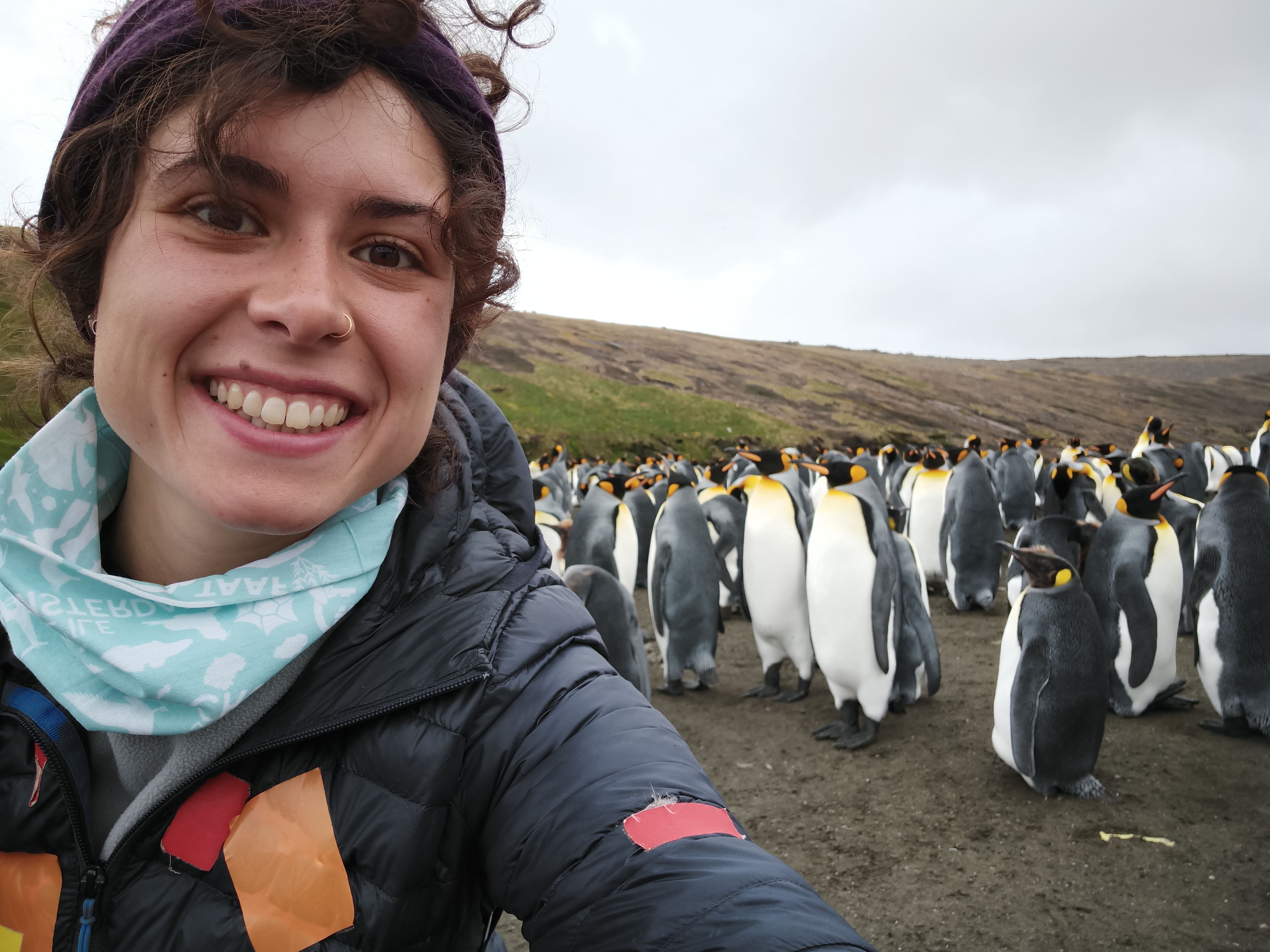
Nina Cossin-Sevrin, ashore of the king penguin colony, to watch and monitor the birds that participated in her study (project in collaboration with the French Polar Institute Paul-Emile Victor and the project 119 ECONERGY, Crozet Archipelago, Subantarctic).
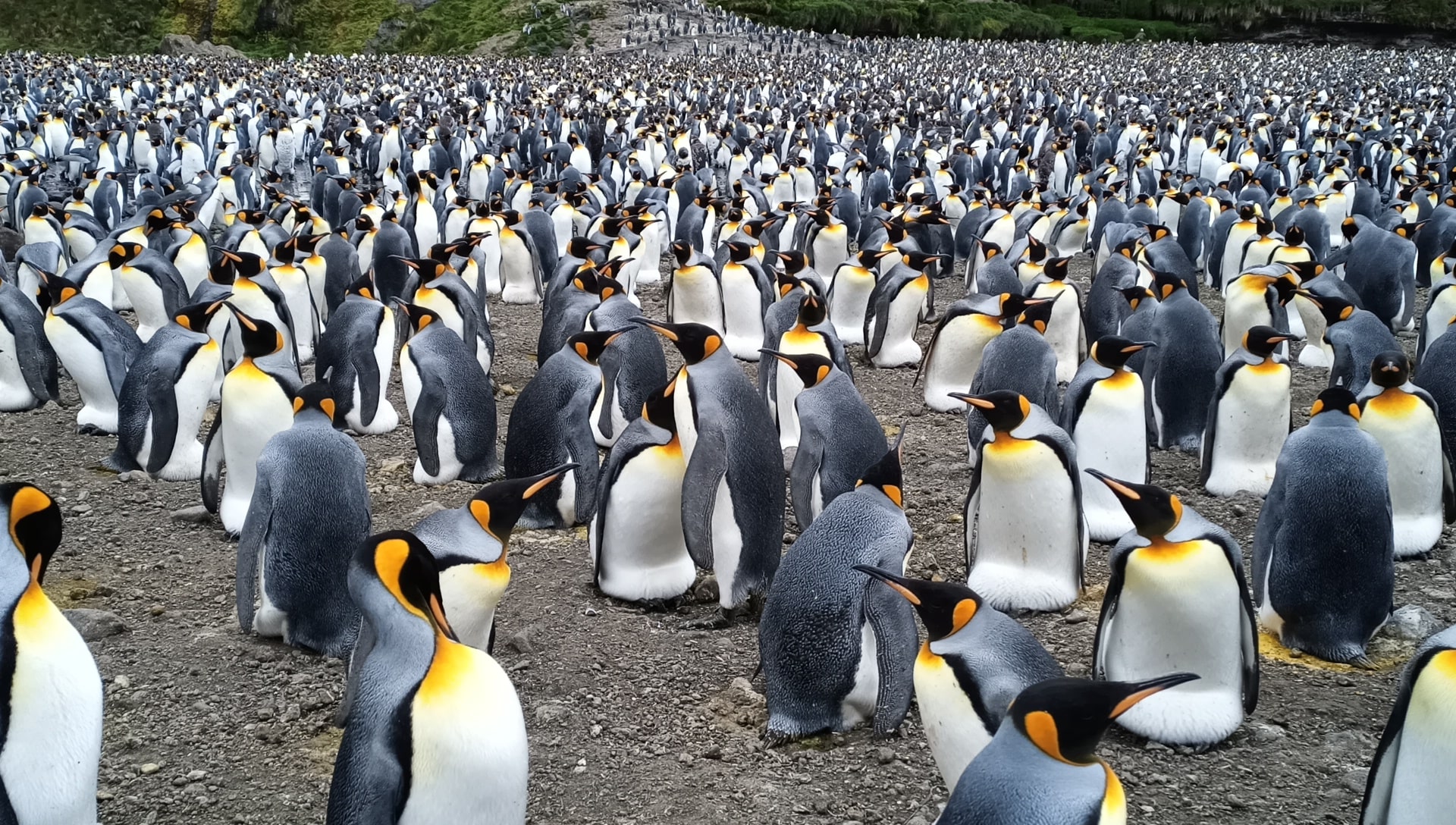
Picture of the king penguin colony. Most of the king penguins are defending their territories in the colony and are incubating their single egg. Photo: Nina Cossin-Sevrin
The results show that early life stress, defined either hormonally as an increase in stress hormone, or more generally as adversity in life conditions, can indeed impact mitochondrial metabolism. Experimentally elevated stress hormones, a high mortality risk, or a mismatched birth date (being born under unfavourable conditions) all have the capacity to modulate energy production in the mitochondria.
Experimentally increasing corticosterone (also called the “stress hormone”) in eggs decreased mitochondrial function in great tit chicks during the growth period. Whereas this decrease in mitochondrial function did not impact the survival of the chicks, it seems to impact the birds on a longer-term with a reduction of body mass during winter. Cossin-Sevrin found that unfavourable conditions during the growth period, such as high mortality risk or a mismatched birth date (being born under unfavourable conditions) can also increase energy production in the mitochondria, both in great tit and king penguin chicks.
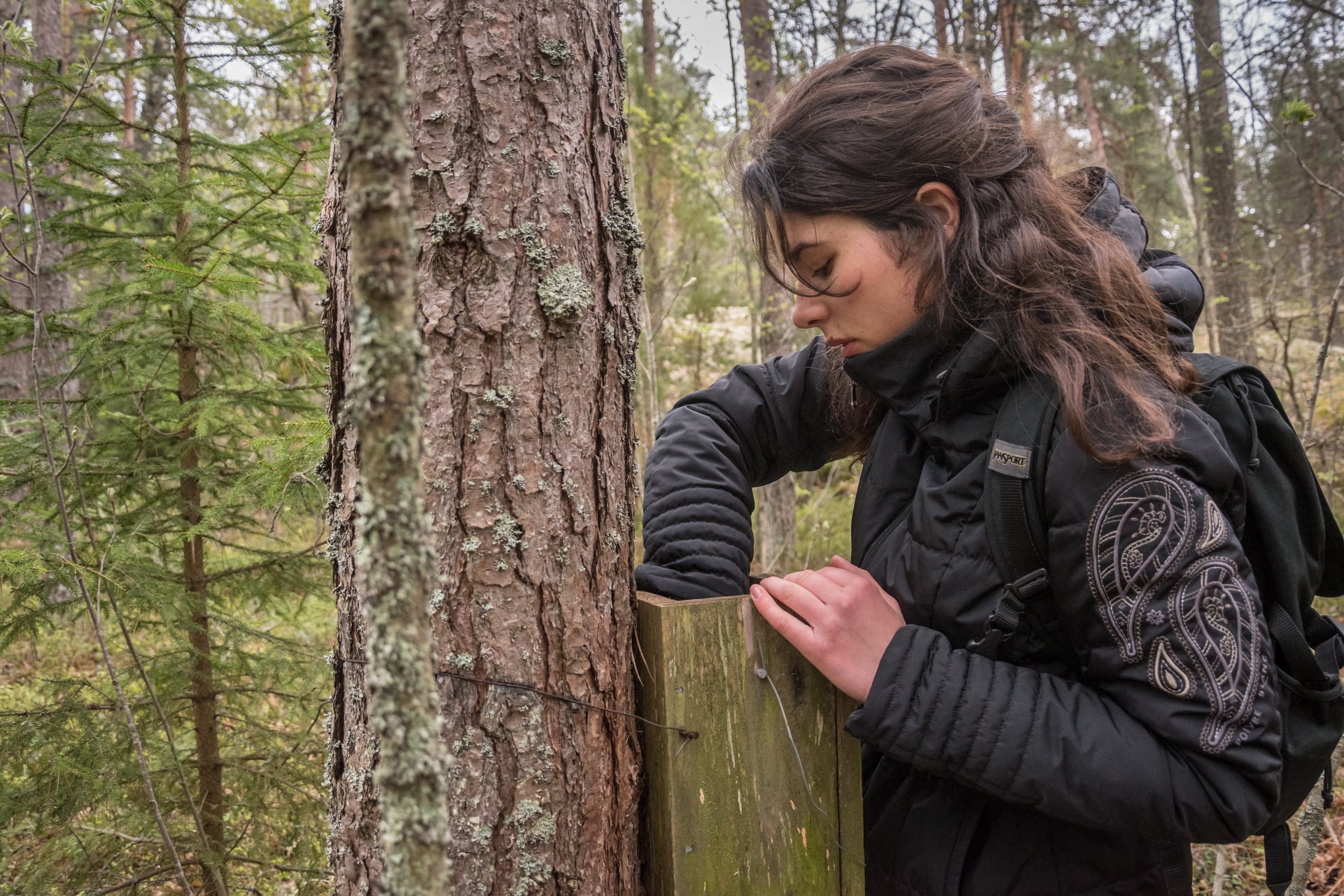
Nina Cossin-Sevrin counting the number of eggs in a nest box during the monitoring of the great tit breeding season (in Ruissalo, Turku). Photo: Pierre-Lou Chapot
“Having a higher metabolism (and producing more energy) seems to be beneficial for the chicks during the growth period, as this period is really important for the bird and is energetically demanding. However, the production of energy in cells is also associated with the production of toxic products, which can promote cellular damage and ageing, when the organism does not have enough defence against these products. The potential costs of having a higher metabolism during the growth period need to be investigated” Cossin-Sevrin said.
When focusing on the parents, Cossin-Sevrin also found that maintaining energy production through the stress of breeding requires specific strategies, and that males and females can find different ways of achieving that.
“I was really surprised to observe that king penguin females and males can differ on a metabolic aspect, as both sexes are so alike and fulfil similar tasks during the breeding season! They both defend the territory in the colony, incubate the egg (and later on the chick), provide protection against predation. However, females had a much higher mitochondrial metabolism compared to males, and it seems that physiological needs differ between sexes” Cossin-Sevrin said.
“This research was also an opportunity to reflect on the difficulty of defining even central concepts as mitochondrial efficiency and, in the end, metabolism itself, within the framework of ecology when looking at animals in conditions where they are faced with such remarkable physiological feats as surviving a freezing Finnish winter for a 20-gram passerine, or endlessly swimming through the great Southern Ocean for a King penguin.”
Photos:
Picture 1. Nina Cossin-Sevrin counting the number of eggs in a nest box during the monitoring of the great tit breeding season (in Ruissalo, Turku). Photo: Pierre-Lou Chapot
Picture 2. A great tit incubating its eggs in the nest box. Photo: Nina Cossin-Sevrin
Picture 3. Picture of the king penguin colony. Most of the king penguins are defending their territories in the colony and are incubating their single egg (project in collaboration with the French Polar Institute Paul-Emile Victor and the project 119 ECONERGY, Crozet Archipelago, Subantarctic). Photo: Nina Cossin-Sevrin
Picture 4. Nina Cossin-Sevrin, ashore of the king penguin colony, to watch and monitor the birds that participated in her study (project in collaboration with the French Polar Institute Paul-Emile Victor and the project 119 ECONERGY, Crozet Archipelago, Subantarctic).
***
MSc Nina Cossin-Sevrin defends the dissertation in Biology titled “How can cellular-level energy production explain how wild birds cope with environmental stress?” at the University of Turku on 14 June 2024 at 12.15 (University of Turku, Main Building, Tauno Nurmela lecture hall, Turku).
Opponent: Professor Jan-Åke Nilsson (Lund University, Sweden)
Custos: Professor Katja Anttila (University of Turku)
Doctoral Dissertation at UTUPub
Portrait of Nina Cossin-Sevrin Photo: Robin Cristofari
